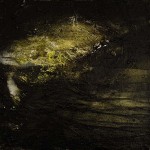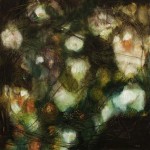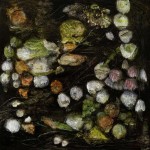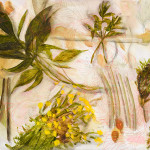- 2008 oil on Belgian linen 180 x 300cm, Sold
- 2008 oil on Belgian linen 180 x 240cm, $44,000
- 2008 oil on Belgian linen 152 x 152cm, Finalist, Waterhouse Natural History Prize, $24,000
- 2008 oil on Belgian linen 180 x 300cm, Sold
- 2008 oil on Belgian linen 180 x 300cm, Sold
- 2008 oil on Belgian linen 122 x 122cm, Sold
- 2008 oil on Belgian linen 152 x 152cm, Sold
- 2008 oil on Belgian linen 240 x 180cm, Sold
- 2008 oil on canvas 20 x 20cm, Sold
- 2008 oil on canvas 20 x 20cm, Sold
- 2008 oil on canvas 20 x 20cm, Sold
- 2008 oil on canvas 20 x 20cm, Sold
- 2008 oil on canvas 20 x 20cm, Sold
- 2008 oil on canvas 20 x 20cm, Sold
- 2008 oil on Belgian linen 122 x 122cm, Sold
- 2008 oil on Belgian linen 122 x 122cm, Sold
- 2008 oil on Belgian linen 122 x 122cm, Sold
- 2008 oil on Belgian linen 122 x 122cm, Sold
- 2008 oil on Belgian linen 152 x 152cm, Sold
- 2008 oil and mixed media on archival paper 55.5 x 75.5cm, Sold
Richard Dunlop is, at heart, a well-travelled rebel. This is best reflected in his art practice, as he believes “the act of making paintings involves balancing risk-taking with experience”. Dunlop first began taking these risks within his art practice in the mid-1980s – though considerably less experienced – when he “started blurring the interrupted traditions of botanical illustration, landscape and still life with the then moribund tradition of painting”. As he explains, “no-one else to my knowledge was doing it because every element of it was downright taboo, and collectively almost heretical…” – Eric Nash, Curator
In Rainforest and Mangrove (After Fairweather) (both 2008), plant and water forms are elaborated across the painting’s surface, abandoning the logic of a perspectival scene for a meandering brocade of natural forms. Dunlop is aware of the historical weight of painting yet also believes in an essential spontaneity in the studio. “My interest is in the process of painting, with each painting a fresh undertaking, he says. “In the end, paintings make their own reasons for being of any interest over time, both individually and collectively. That’s how they maintain a pictorial freshness.” – Sheridan Hart
“One of our best mark-makers …removes the facts and stuffs the heartfelt painterly gestures in the
spaces left open, like an accomplished surgeon.” – John McDonald
“I get some of my best ideas about gardening while I’m painting, and some of my best ideas for
painting while gardening.” – Richard Dunlop



















